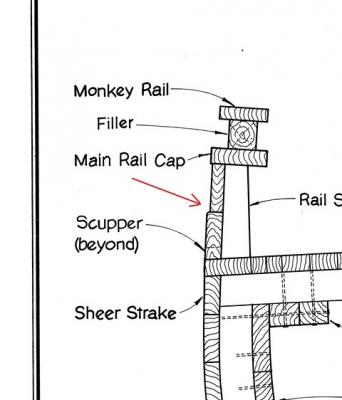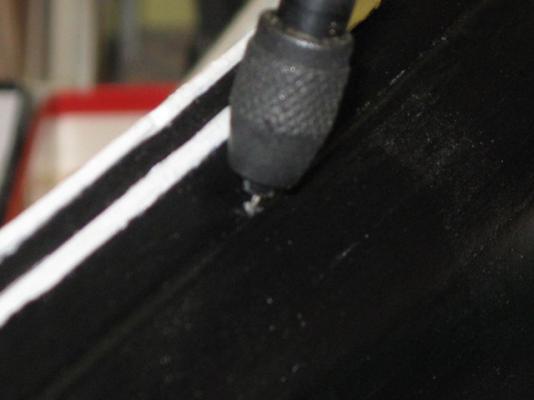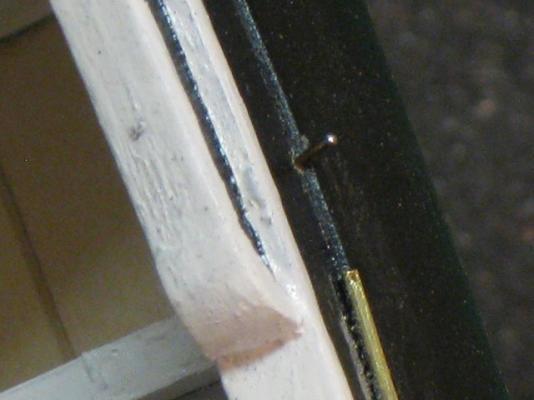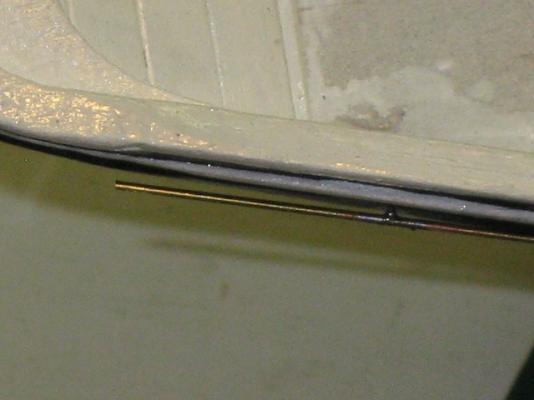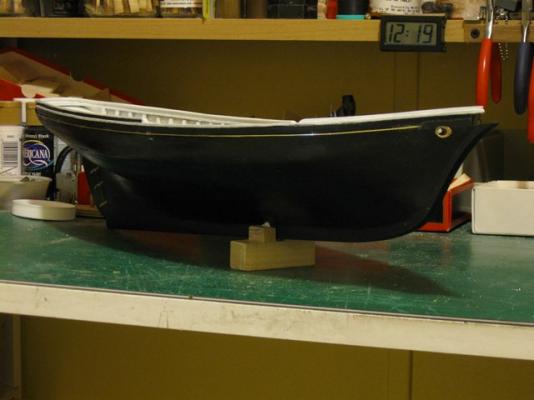-
Posts
3,498 -
Joined
-
Last visited
Content Type
Profiles
Forums
Gallery
Events
Everything posted by captainbob
-
Michael, your drum method is very well thought out. By pulling on both sides at the same time you only need half the number of turns. Don’t forget to put some sort of stop on the drum. When the sail is all the way “in” the drum needs to stop even if your finger does not release fast enough. And when the sail is all the way “out”, if the drum does not stop you end up with tangled line. I always had mine stop just before the boom hit the shrouds. A purchased sail winch has a mechanical stop built into the gearing inside the winch. Maybe you can do it with gearing also. Ah, yes. There are a lot of people on the forum I would like to live near. But better the forum than nothing. Bob
- 2,215 replies
-
I joined the forum to get ideas. Turns out when I learn others do to. Bob
- 420 replies
-

Harriet McGregor by Boccherini
captainbob replied to Boccherini's topic in - Build logs for subjects built 1851 - 1900
Very nice wood work. Bob -
Thanks Popeye. But I got help from the forum. Keith, I only hope it doesn't become a target for pirates. Bob
- 420 replies
-
Thanks John, that’s what she says also. Michael, the paint is acrylic covered with Pledge/Future. 60/40 solder and a low temp solder iron. Thanks for the info David, maybe next time. Bob
- 420 replies
-
As I said before, “SHE wants GOLD”. Now I come to the cove that should be gold. I looked into gold leaf but not only is it expensive but I don’t need near that much. Yellow paint isn’t the same and I’ve never seen a gold paint that came close. Besides with my hands I could never paint a straight line. So here comes brass. All I have to do is fasten a strip of brass . . . but I read topics here saying how do you fasten brass to wood? There are probably many ways but here is how I did it. The stripe goes in the cove line or in my case where the thin bulwark strake and the wide strake meet. My plan was to solder .188” of the tip of several .024” brass plank nails to a .032” brass rod. This is still up in the bulwark area so fasteners had to be placed where the stations are. I drilled .020” holes into the stations. I measured the hole locations and soldered the nail tips at the same distances and found out that if you are off by even that little the brass rod doesn’t fit properly. On to plan B. I placed the nail tips in the holes leaving about .06” exposed. Then I soldered on the brass rod and pushed it tight against the wood. I then filed a flat on the exposed part of the brass to catch the light. Thanks for the help Nils. Bob Drilling for the nail tips. A nail tip pressed in, waiting for solder. Rod soldered to nail tip
- 420 replies
-
Yes, the sheet takes a lot of rope and multiplies every time it passes through the blocks. I can almost imagine myself walking that deck and getting ready to sail. Bob
- 2,215 replies
-
Now you have the idea, the board goes all the way down. The centerboard boats sailed/worked in shallow water and the centerboard needed to be free to be pushed up into the centerboard trunk in case of grounding. Most were weighted though I have seen designs of some that were not. If the board is locked down in any way then grounding could damage it. Bob
- 86 replies
-
- muscongus bay lobster smack
- Midwest Products
-
(and 1 more)
Tagged with:
-
Just remembered. Now I have to go back and take the paint off the pintles and gudgeons. Bob
- 420 replies
-
Thanks Allan. That’s why I’m with MSW. To learn how to do this kind of thing. Nils, that’s what my admiral is expecting too. She already has a place for Lettie and says she wants to see lots of gold. So I won’t be painting the brass. Bob
- 420 replies
-
Well done. Nice sails. I'm like S.os, I want to sail her. Bob
- 60 replies
-
- muscongus bay lobster smack
- first build
-
(and 2 more)
Tagged with:
About us
Modelshipworld - Advancing Ship Modeling through Research
SSL Secured
Your security is important for us so this Website is SSL-Secured
NRG Mailing Address
Nautical Research Guild
237 South Lincoln Street
Westmont IL, 60559-1917
Model Ship World ® and the MSW logo are Registered Trademarks, and belong to the Nautical Research Guild (United States Patent and Trademark Office: No. 6,929,264 & No. 6,929,274, registered Dec. 20, 2022)
Helpful Links
About the NRG
If you enjoy building ship models that are historically accurate as well as beautiful, then The Nautical Research Guild (NRG) is just right for you.
The Guild is a non-profit educational organization whose mission is to “Advance Ship Modeling Through Research”. We provide support to our members in their efforts to raise the quality of their model ships.
The Nautical Research Guild has published our world-renowned quarterly magazine, The Nautical Research Journal, since 1955. The pages of the Journal are full of articles by accomplished ship modelers who show you how they create those exquisite details on their models, and by maritime historians who show you the correct details to build. The Journal is available in both print and digital editions. Go to the NRG web site (www.thenrg.org) to download a complimentary digital copy of the Journal. The NRG also publishes plan sets, books and compilations of back issues of the Journal and the former Ships in Scale and Model Ship Builder magazines.



